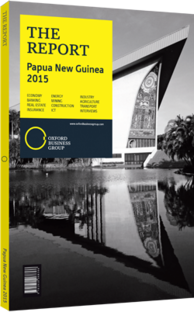Grant Christie, Vice-President and Country Manager, Talisman Energy, Repsol Group: Interview

Interview: Grant Christie
How does the operating environment for the oil and gas industry in Papua New Guinea compare with those of other markets in the region?
GRANT CHRISTIE: The three things to consider when assessing an operating environment for projects in oil and gas are the quality of the rocks, proximity to markets and commercial conditions to support execution, such as fiscal terms and the availability of a skilled and competitive labour force. Regarding the first, we strongly believe in the potential of the rocks in PNG – especially in the foothills area, the mountainous strip between Western Province and the Highlands. There are already several world-class discoveries in PNG with reservoir conditions that allow for very prolific wells, which helps reduce the number of wells required and keep development costs down. With vast areas still to be explored, this makes PNG a very prospective and attractive location.
Regarding the second factor, PNG’s access and proximity to Asian markets is probably one of its strongest competitive edges. Its location near these markets for natural gas – considerably closer than Australia or the west coast of the US – represents a sustainable advantage for PNG.
As for the third factor, PNG is building the capability and capacity to support the development of liquefied natural gas (LNG). The workforce is increasing its skills and in time will be able to participate more deeply in project delivery. This takes time to develop and requires continuity between projects. The government’s programmes in health care, education and infrastructure are definitely pushing the country in the right direction so that it can benefit more broadly. There is currently capacity in PNG to successfully deliver one major project at a time, as was shown by the PNG LNG project. However, in order to build capacity, increase skills and improve competitiveness in this area, the workforce needs sustained employment. It is likely that some degree of rational sequencing for major projects will be needed to avoid the boom-and-bust dynamics we have seen in other areas around the world.
What role are small and medium-sized enterprises (SMEs) playing in PNG’s oil and gas industry?
CHRISTIE: PNG has vast areas within its territory that have yet to be fully explored. This leaves plenty of room for SMEs to operate in the area of speculative exploration. The role of mid-size enterprises remains equally valid. These are companies that have proven development capability and can manage modest projects like local power generation or gas conditioning for sale into existing infrastructure. With its competitiveness increasing and the recent delivery of the PNG LNG project, PNG is now gaining the attention of large companies. This is a very exciting opportunity for PNG, as only these larger companies have the financial capacity and know-how to deliver these large-scale LNG projects.
At what level of production does it make sense to construct an additional LNG train in PNG?
CHRISTIE: LNG train sizes vary depending on a number of factors. These facilities can be developed with reserve volumes of as little as 2trn cu feet, with the largest requiring as much as 6trn cu feet for a single-train unit. A significant consideration in regard to the minimum-size train in PNG is the overall logistics and infrastructure costs in the country. The key infrastructure elements are the pipelines, site preparation and associated infrastructure. All of the major discoveries made to date have been found either in areas that require considerable pipeline infrastructure running over some very challenging terrain or on long river systems that would not support export vessels. The costs associated with such environmental factors push up the minimum volume needed to support an LNG train, and most experienced operators consider 5trn cu feet as a benchmark volume to support a minimum single-train development.
You have reached the limit of premium articles you can view for free.
Choose from the options below to purchase print or digital editions of our Reports. You can also purchase a website subscription giving you unlimited access to all of our Reports online for 12 months.
If you have already purchased this Report or have a website subscription, please login to continue.

